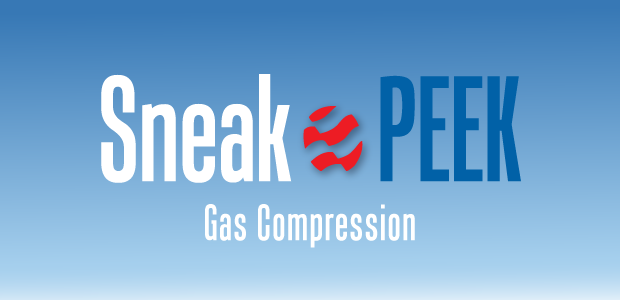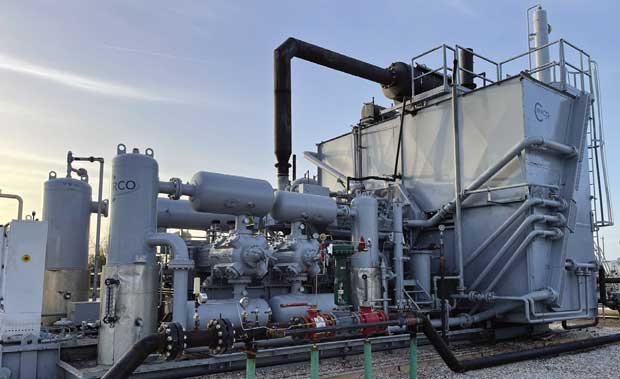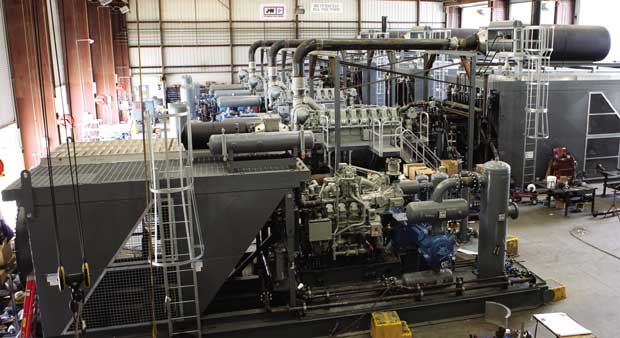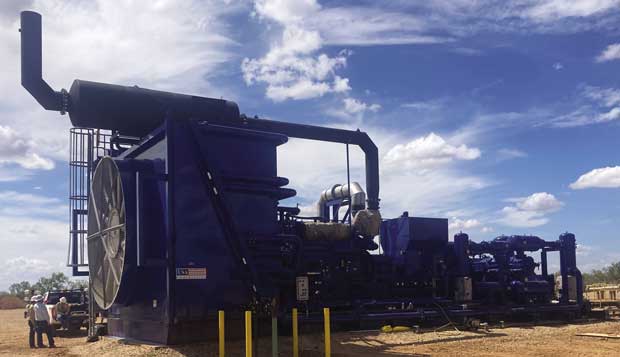
Rising Demand Propels Compression Industry
By Keefe Borden, Special Correspondent
The need for compression to process, transport and liquefy natural gas is rising steadily. Thanks to approvals for new liquefied natural gas export terminals, growing associated gas production and data centers’ voracious appetite for electricity, that ascent is unlikely to stop any time soon.
“It’s a really interesting time for the industry right now,” says Braden Norris, chief financial officer of CherCo. “There are tremendous opportunities in the compression space.”
The demand for compressors has helped push lead times to build and install new ones to around 60 weeks. This time frame includes about 52 weeks to receive the gas engine and another six-eight weeks to package it with a compressor, Norris details. Before COVID, getting a new package would take roughly six-eight weeks.
As the United States continues to expand its liquefied natural gas export capacity and build data centers, demand for natural gas and therefore compression is growing. CherCo and other rental fleet operators say they are bringing units to market to ensure they can provide the equipment customers need.
The long lead times and costs for new compression have helped keep rental fleets’ utilization rates near all-time highs since 2021, Norris says. However, CherCo and other companies are bringing units into the market and can meet immediate needs.
To unlock economies of scale and capitalize on anticipated growth, compression service providers have begun consolidating, Norris observes. He points out that CherCo formed in September 2022 through three transactions: a public carve out, purchasing a compression company in East Texas, and buying large, high-horsepower units from a midstream company.
Contracts with rental companies are for service, not necessarily to install or lease a compressor, Norris comments. “Our clients hire us to move gas,” he says. “They generally are ambivalent to the equipment we use as long as it will meet the contractual requirements.”
In general, contracts for smaller horsepower compressors tend to be around one to two years, while contracts for larger units are two to four years. Usually, Norris says the agreements are renewed once the initial term has expired. “The reality is the compressors tend to stay on location for five to seven years,” he says.
In some cases, operators who are unsure how a given batch of wells will perform will adopt a month-to-month agreement after the initial term of the lease has expired, as this gives them the flexibility to move compression capacity up or down as production fluctuates. When operators are more confident about the expected production of a given region, they generally favor the security of an established rate over a longer term, Norris relates.
Maintenance
Effective maintenance is vital whether an operator wants to maximize compressor uptime and efficiency or minimize emissions, observes James Barr, vice president of sales at J-W Power. As rental rates rise, so do the economic benefits of owning and maintaining compressors internally rather than leasing them and outsourcing service. Even so, Barr says the case for leasing is growing stronger with time.
One primary argument for leasing remains the same as always: It frees up capital and human resources for operators’ core business of drilling, completing and producing wells. However, that argument is even more compelling as demand for compression has grown and competition for skilled technicians has intensified, Barr reports.
As more compression packages are built and sent to the field, the amount of equipment that needs to be maintained is growing. This trend, as well as the variability of shale play production, has bolstered interest among producers and midstream companies in leasing rather than owning compression assets, J-W Power reports.
In areas with robust oil field activity, such as the Permian Basin, labor and the specialized trucks and tools technicians need to get the job done can be difficult or expensive to find, Barr notes. “With these trends, the economics continue to favor renting equipment rather than owning it, especially with ever changing operating conditions at the wellhead,” he says.
That holds for many applications across upstream and midstream, from gas lift or gathering line compressors that only produce 145 horsepower to larger units that pack 2,065 horsepower, Barr says.
In their quest to reduce emissions and simplify maintenance, some upstream and midstream companies deploy compressors driven by an electric motor rather than a gas-powered engine, Barr mentions. He says J-W Power can package electric units up to 6,000 horsepower for sale to customers, although those are bigger than desired for its rental fleet.
Dual-Drive Units
For emissions-conscious companies that operate in areas with clean power generation, electric compression can be extremely attractive, says Clint Green, CEO of USA Compression. However, the electric grids in many oil fields cannot supply power in the amount or quality that a compressor would require. In other areas, the grid can usually provide power but has too little spare capacity to do so when demand peaks or disruptions occur.
When electricity is available, prices can be extremely volatile, which Green warns can introduce a new element of unpredictability and risk to an operator. With that in mind, Energy Transfer, which owns USA Compression’s general partner, has developed and patented a dual-drive technology that allows a single compressor to switch back and forth between an electric motor or a natural gas engine as electricity’s availability and cost fluctuates.
This compressor from USA Compression has an electric motor drive and a natural gas engine. The company says dual-drive units generally run off electricity, but if prices spike or power goes down, they can switch to natural gas without disrupting flow.
“If you were standing next to one of these compressors, you would hear when the natural gas engine starts, but the compressor never needs to stop,” he reports. “It moves seamlessly from one to the other.”
The dual-drive compressor generally spends its time in electric mode, but it can convert to the natural gas engine built into the skid any time electricity prices spike or the grid suddenly becomes unavailable, Green says. Nationally, data from 2020 suggests that only happens about 20% of the time. However, Green indicates the percentage varies widely by region and by time of year.
For instance, during the peak summer hours in West Texas, power prices can get very high, and gas is relatively cheap. As a result, operators there typically run on gas about 60% of the time. In South Texas, that percentage drops to 30%.
To monitor power prices every moment of every day, Green says USA Compression works with power management groups such as Endure Energy. When a spike occurs, it advises operators to switch to gas, which they can do remotely.
“The dual drive units provide the flexibility to run on electric drivers that many people desire today, along with added reliability,” Green summarizes.
Getting that flexibility does require a larger footprint and higher installation costs, Green acknowledges. Given that reality, he says USA Compression provides dual-fuel units to a small but growing group of clients who particularly value the emissions reductions and peace of mind they provide.
For other great articles about exploration, drilling, completions and production, subscribe to The American Oil & Gas Reporter and bookmark www.aogr.com.


















